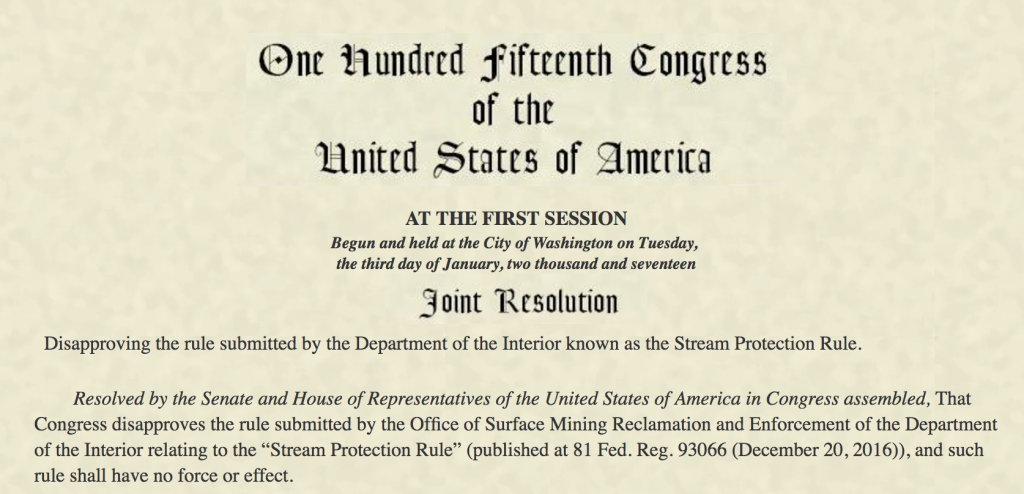Today, President Trump signed H.J.Res.38. The Hill reported in a headline, “Trump signs bill undoing Obama coal mining rule.”
Trump tweeted that headline:
‘Trump signs bill undoing Obama coal mining rule’ https://t.co/yMfT5r5RGh
— Donald J. Trump (@realDonaldTrump) February 16, 2017
Alas, he did not sign a bill. As the abbreviation H.J.Res. suggests, it was a House Joint Resolution. What is the difference between a bill and a resolution? A bill becomes law when it is passed by both houses, and signed by the President. A resolution is something short of a bill, but must be passed by both houses, and be signed by the President, to take legal effect.
Article I, Section 7, Clause 2 provides the path for a bill to become a law:
Every Bill which shall have passed the House of Representatives and the Senate, shall, before it become a Law, be presented to the President of the United States; If he approve he shall sign it, but if not he shall return it, with his Objections to that House in which it shall have originated, who shall enter the Objections at large on their Journal, and proceed to reconsider it.
Article I, Section 7, Clause 3, provides a different definition for orders, resolutions, or votes, in general.
3: Every Order, Resolution, or Vote to which the Concurrence of the Senate and House of Representatives may be necessary (except on a question of Adjournment) shall be presented to the President of the United States; and before the Same shall take Effect, shall be approved by him, or being disapproved by him, shall be repassed by two thirds of the Senate and House of Representatives, according to the Rules and Limitations prescribed in the Case of a Bill.
Even though a Resolution does not become law, in the sense of the bill, it still must be presented to the President for his signature. My understanding is Clause 3 prevents Congress from trying to enact a law, by calling it something else, and not submitting it to the President. No dice.
